Encounters between DPs and the rest of the Berlin population were part of everyday life, and dominated by questions of guilt, reparations, and remembrance.
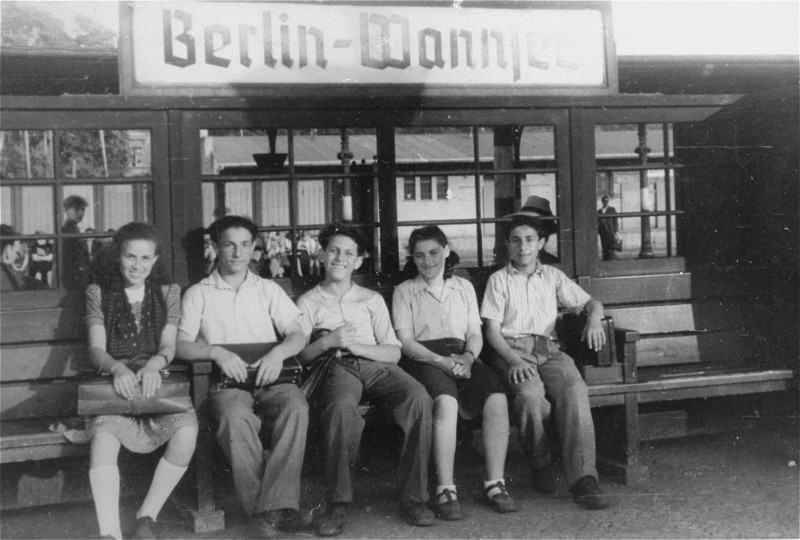
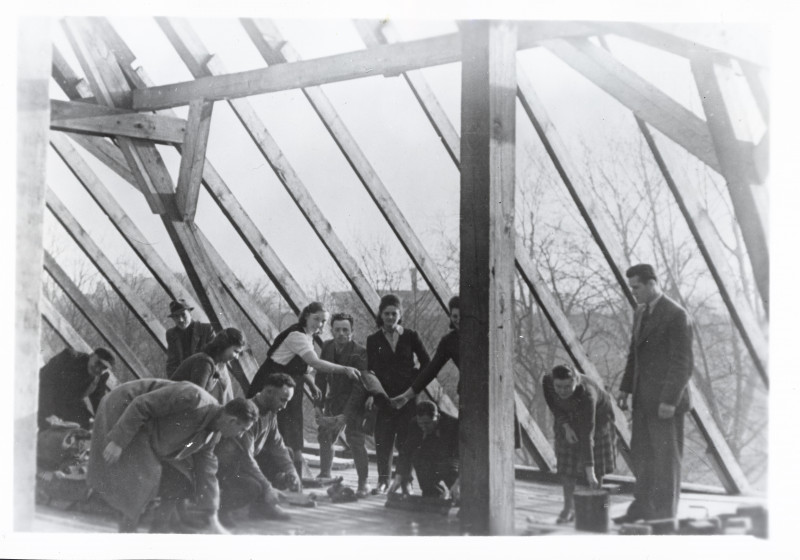
Refugees are repairing the roof on an accommodation in Iranische Straße, 1945 © American Jewish Joint Distribution Committee Archives, NY_07161

Crowd on the main square in „Düppel-Center“ © Wiener Library, WL6996 (uncatalogued)
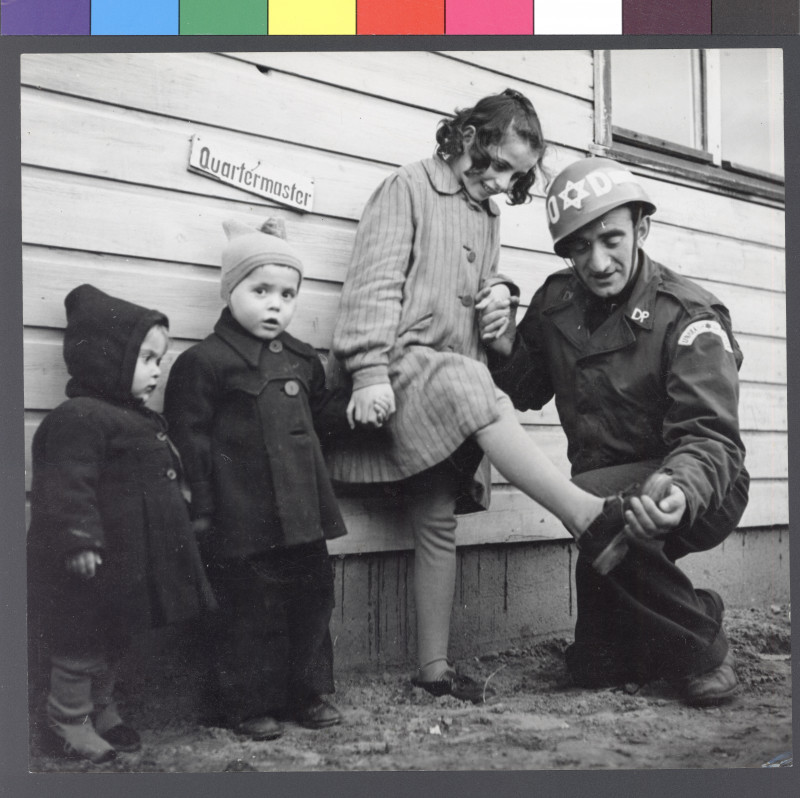
Young DPs are given new shoes by a DP camp policeman, ca. 1946 © American Jewish Joint Distribution Committee Archives, NY_11619
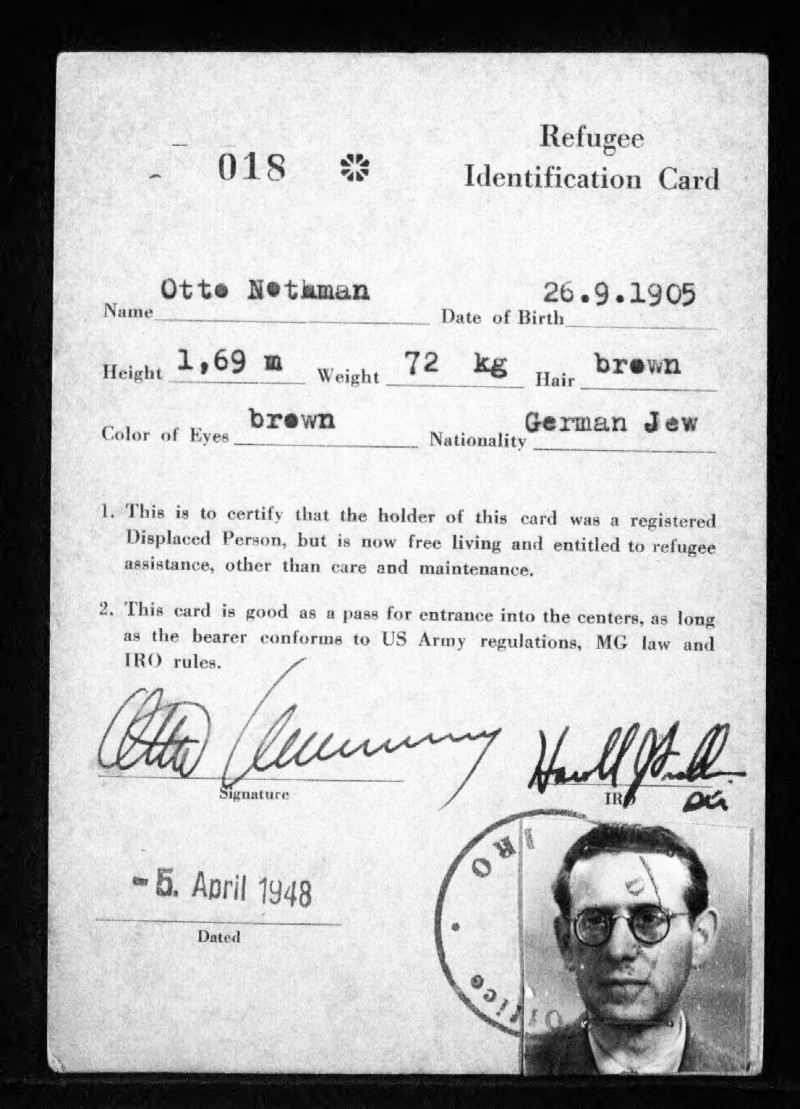
Otto Nothmann was able to identify himself to Allied soldiers in the chaos of postwar Berlin with his International Refugee Organization ID card. DP status entitled him to an increased level of food and lodging in a Jewish DP camp. © Courtesy of the Leo Baeck Institute, New York, AR 10492

Entrance to the UNRRA-Camp in Berlin-Mariendorf, 1947 © Jüdisches Museum Berlin, Inv.-Nr. 2006/8/10, Schenkung von Chaim Stein
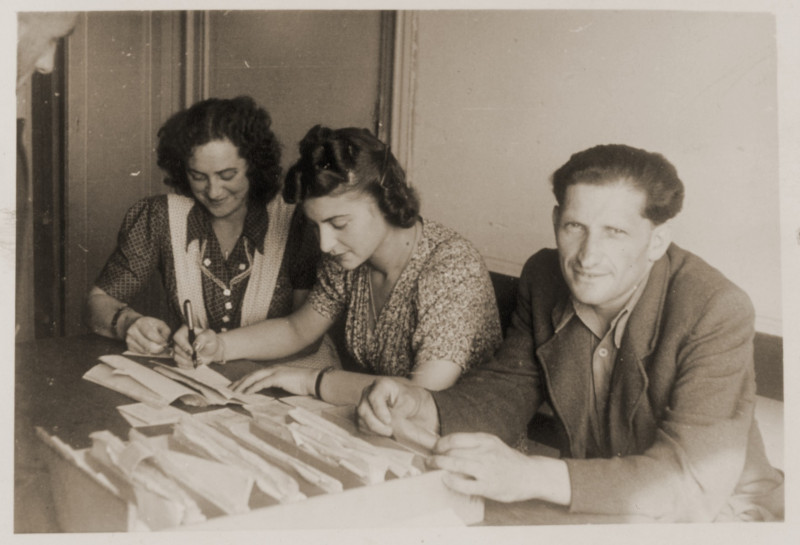
Table outside the administration office in the DP camp „Düppel-Center“, Berlin 1946 © United States Holocaust Memorial Museum, courtesy of Miles a Chris Laks Lerman, N04926
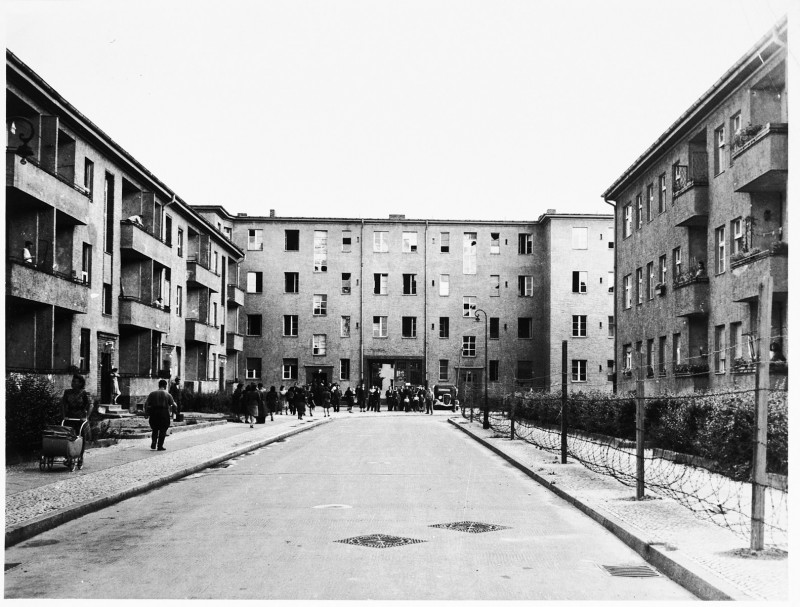
Areal of the Jewish DP Camp in Berlin-Marienfelde © United States Holocaust Memorial Museum, courtesy of Mayer & Rachel Abramowitz, 58438
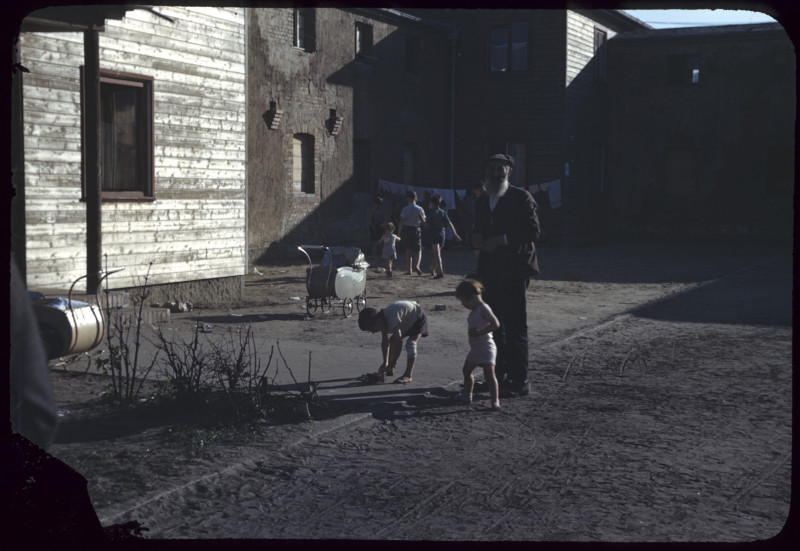
People in a Jewish DP camp in Berlin, 1947 © United States Holocaust Memorial Museum, courtesy of Robert L. Kaplan, 67793
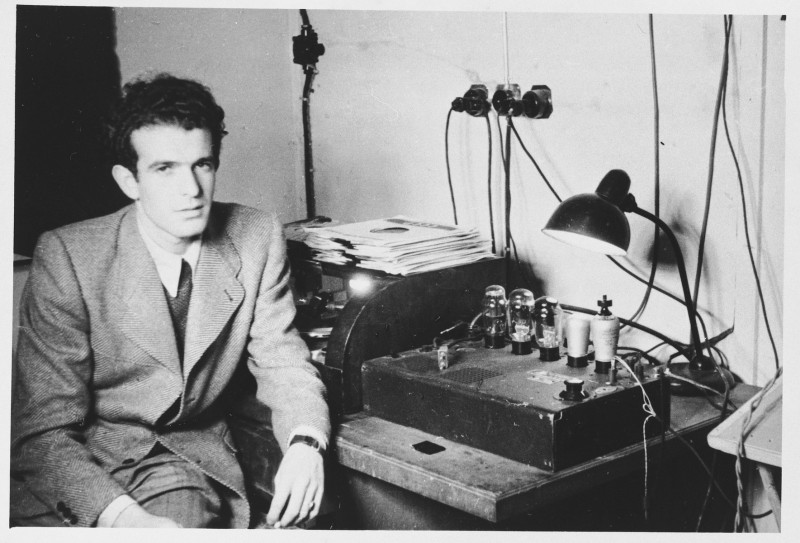
A Jewish DP radio broadcaster poses by his equipment and a stack of records in the Schlachtensee displaced persons camp. © United States Holocaust Memorial Museum, courtesy of Mayer & Rachel Abramowitz, 58417
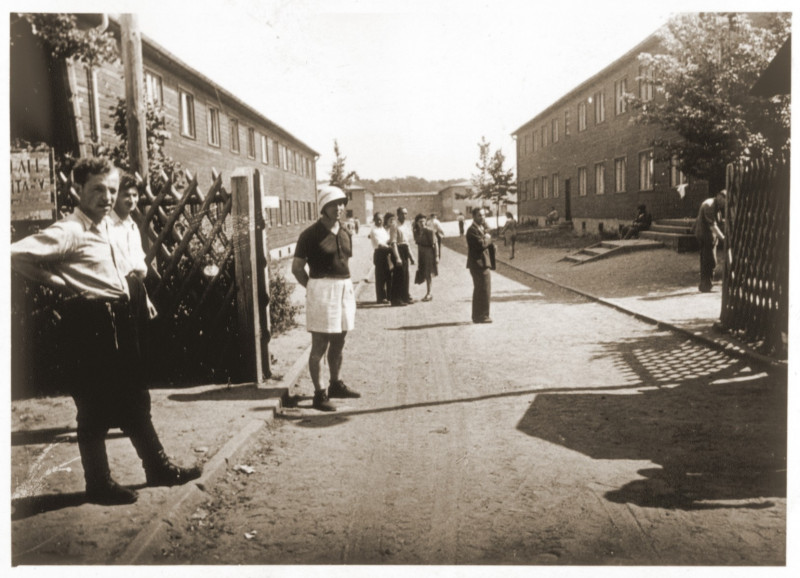
Gate at Schlachtensee Displaced Persons Camp, Berlin © United States Holocaust Memorial Museum, courtesy of Miles & Chris Laks Lerman
DP camps, so-called assembly centers, were established in West Germany in hospitals, schools, former barracks or forced labor camps, but also occasionally on the sites of former concentration camps. Initially, displaced persons were housed according to their (former) nationality. This led to conflicts: Jews had to share space with potential collaborators from their home countries. They demanded their own accommodation. In addition, many were so debilitated that they needed special assistance. As a result, the U.S. American military established DP camps for Jewish survivors throughout the U.S. occupation zone.
“It is not the purpose of the aid organizations and they do not have the means to rebuild us ‘spiritually.’ It must be our own work and responsibility. That is, we ourselves must be the initiators and realizers of this task. And the task is a very big and important one, and, in my opinion, the most important one on the agenda of the revival of our people.”
Undzer Lebn, AUGUST 10, 1946

The first port of call for Jewish refugees in Berlin was the Jewish Community, newly founded in the fall of 1945, which set up shelters in the Soviet- and French-occupied parts of the city. A larger reception camp was established on Eichborndamm in Wittenau. At the end of 1945, Soviet authorities announced their plan to expel all Jewish refugees. Many of them fled to the U.S.-occupied part of the city. To
accommodate the refugees, camps were set up in Zehlendorf and Mariendorf within a few weeks. They were under the control of the United Relief and Rehabilitation Administration (UNRRA), which later became the International Refugee Organization (IRO).
The American Jewish Joint Distribution Committee (JDC) was also involved in significant ways. At its peak in 1946, over 5,000 people lived in the “Düppel-Center” camp in Zehlendorf, and over 4,000 in the “Bialik” camp in Mariendorf.
The residents quickly demanded self-governance of the DP camps. They developed democratic structures that regulated community life. The most important authority was the Berlin Central Committee, which negotiated with the military administration and the aid organizations. Under the Central Committee were the individual camp committees, which acted as community administrators. In all of Berlin‘s Jewish DP camps, there were self-organized structures encompassing a police, administration, jurisdiction, education, sports, and food services. One of the most important activities was the establishment of a tracing service for survivors‘ relatives. With the help of JDC, more than 16,000 people were thereby identified and connected to other DPs from 1945 to 1947.
“D.P.s” or “P.D.s”.
General designations are often not correct. The clearest proof of this are the two world-famous letters D.P. Their correct meaning is Displaced Person – abducted persons […]. For us Jewish DPs this is certainly a correct designation. We are homeless people who have lost our loved ones, and we cannot return to our former homes, even after the armistice. […] But let us look at the other category of DPs. These are non-Jewish people for whom the term DPs – displaced persons – is not appropriate. […] They voluntarily joined National Socialism. […] While we are DPs, deported persons, they are PDs, political desperados.”
Undzer Lebn, September 15, 1947

Encounters between DPs and the rest of the Berlin population were part of everyday life, and dominated by questions of guilt, reparations, and remembrance.